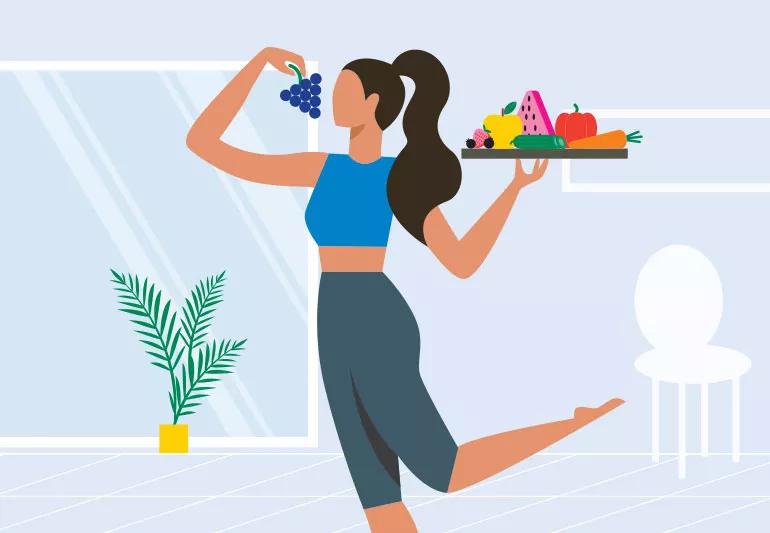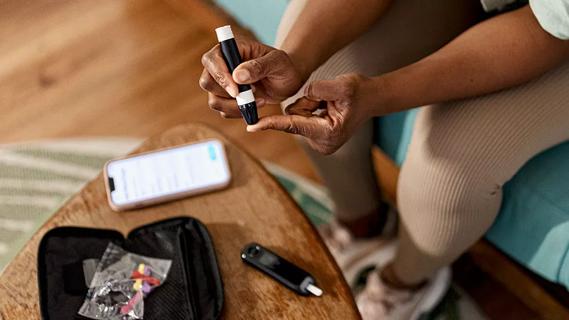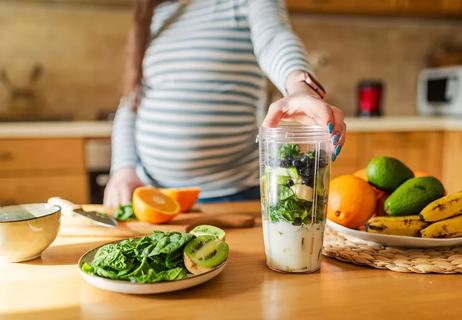Eat balanced meals, reduce stress and exercise

Your blood sugar levels are affected by many things. Some of these things are out of your control — for example, some health conditions can cause high blood sugar (hyperglycemia), or you might have a genetic disposition to develop high blood sugar.
Advertisement
Cleveland Clinic is a non-profit academic medical center. Advertising on our site helps support our mission. We do not endorse non-Cleveland Clinic products or services. Policy
But in certain cases, your daily health habits can also play a role in your blood sugar levels. “For some people, managing your nutrition, activity level and weight can make a difference,” says diabetes educator Megan Asterino-McGeean, BSN, RN, CDCES.
Asterino-McGeean explains which lifestyle changes can help lower blood sugar without medication — and when you’ll need to turn to your healthcare provider for help.
People living with certain health conditions, such as the autoimmune disorder Type 1 diabetes, can’t lower their blood sugar naturally.
With Type 1 diabetes, your pancreas doesn’t make insulin, a hormone that helps regulate your blood sugar levels. After being diagnosed with Type 1 diabetes, you need insulin injections or insulin pump therapy for the rest of your life in order to stay alive.
But if you’re diagnosed with Type 2 diabetes or prediabetes — meaning, you’re at risk of developing Type 2 diabetes — you can try to lower your blood sugar using natural methods.
Here are seven effective strategiesAsterino-McGeean recommends if you fall into the latter category:
Sugar-sweetened beverages are a one-way ticket to high blood sugar. Eliminating or drinking fewer of them can lower blood sugar, as well as helps with weight loss and maintenance, says Asterino-McGeean. “Save soda pop and juice for when you need to treat low blood sugar.”
Advertisement
Drinks high in sugar include:
Although Asterino-McGeean says that carbs aren’t “bad,” they do affect blood sugar levels. “Our blood sugars mimic our carbohydrate intake. Eating too many carbs increases sugar levels. That’s why consistency is key.”
Asterino-McGeean recommends eating similarly portioned carbs at each meal. Depending on your meal plan, you may also have to reduce the overall amount of carbs you eat throughout the day. “Be choosy. Nutrient-dense, high-fiber, complex carbs are a better everyday choice than simple processed carbs,” she adds. “Processed carbs don’t occur naturally and tend to be located in the middle of the grocery store.”
Examples of better carb choices include:
Not sure where to start? Asterino-McGeean recommends enlisting a dietitian to guide you. “Everyone’s needs are different. You may have other nutrition concerns in addition to managing high blood sugar or diabetes. A dietitian can help you individualize an eating plan, make adjustments and set realistic goals.”
“Your carbohydrates need a chaperone. Eat them with other foods like non-starchy vegetables and lean protein,” advises Asterino-McGeean. “These foods won’t raise your sugar as high as some carbohydrates will.”
The less you move, the higher your blood sugar tends to be, says Asterino-McGeean. Exercise is also one of the best things you can do for your overall health, mood and metabolic rate.
“It’s important to be active, but that can be tricky depending on your lifestyle or any health conditions you have,” she adds. “So aim to move more than yesterday. If that’s all you can do, it still counts.”
The American Diabetes Association suggests starting with about 30 minutes of cardio or aerobic exercise three times a week and working up to five times a week. “If you can’t do 30 minutes at a time, focus on five- or 10-minute increments instead. Try that once a day. Move up to twice and then three times each day when you can tolerate more.”
Asterino-McGeean recommends beginning with cardio, such as walking briskly, with a dash of resistance training and strength exercises. “If you’re starting a new exercise routine, talk with your provider, physical therapist or trainer first to make sure you’re doing it safely.”
Advertisement
Because stress impacts blood sugar, it’s important to find ways to cope, such as hobbies, exercise or talk therapy. And steer clear of coping mechanisms that negatively affect your blood sugar, like overeating or drinking alcohol.
If you’ve been diagnosed with diabetes or prediabetes, monitoring your sugar levels can help you problem-solve when you have a blood sugar spike. It can also shine a light on your overall blood sugar trends and their causes.
Use a glucometer (blood sugar monitor) to make sure you’re in the targeted range your healthcare provider recommends. Asterino-McGeean says to check with your insurance to see if these monitors are covered. “You can also buy inexpensive ones over the counter at most grocery stores and pharmacies,” she adds.
Nicotine raises blood sugar because it affects how your body responds to insulin. And smoking causes inflammation, which can also raise blood sugar, explains Asterino-McGeean. “It’s a double whammy. If you have high blood sugar and you smoke, you have double the risk for complications.”
Asterino-McGeean says to be careful about natural remedies promising to lower blood sugar. “Unfortunately, when you read into a lot of them, there’s no research backing their effectiveness and safety,” she notes. “Plus, it can be dangerous to take supplements or herbals said to lower sugar when you’re on diabetes medications. Talk to your provider before starting any medications or natural remedies to be safe.”
Advertisement
When attempting to lower your blood sugar naturally, take the long view. “You are talking about a lifestyle change, not a quick fix,” says Asterino-McGeean. “It may take a few weeks or months to see results.”
What if you’ve been trying home remedies to lower blood sugar for a few months, and your blood sugar levels still won’t budge? Asterino-McGeean says you should also schedule an appointment with your doctor. “At this point, it’s time for a conversation with your healthcare provider to see what’s going on and discuss your options. Together, you and your doctor can determine the next steps in caring for your health.”
Advertisement
Learn more about our editorial process.
Advertisement

Planning ahead, checking in with your care team and being vigilant about blood sugar monitoring can help ensure a safe fast

Type 1 diabetes happens when your body doesn’t make insulin, while Type 2 happens when your body can’t use insulin properly

Updated food label guidelines make it easier to track added sugars in your diet

This no-rules bodybuilding ‘diet’ comes with big risks

Watch your diet, exercise regularly and get a blood glucose level screening early

The high-fat diet can be beneficial for those who have obesity or diabetes

Type 2 diabetes isn’t inevitable with these dietary changes

Early studies have linked the two, but more research is needed

Type 2 diabetes isn’t inevitable with these dietary changes

Applying a hot or cold compress can help with pain